Nourished by the mild weather all year round, Vancouver is a casual town with a laid-back atmosphere that can give you the best vacation in Canada. One of the most important factors that affect your vacation in Vancouver is the weather. Each season comes with a different climate, not to mention the temperature gap between day and night.
To help you with better preparation and avoid last-minute shopping, we have come up with an ultimate packing list that you need for each season when visiting Vancouver.
This article includes affiliate links where we may get a small commission if you use our link. No extra cost is added on and all funds will be used to support our team and content.
What to Wear When Visiting Vancouver in Spring?
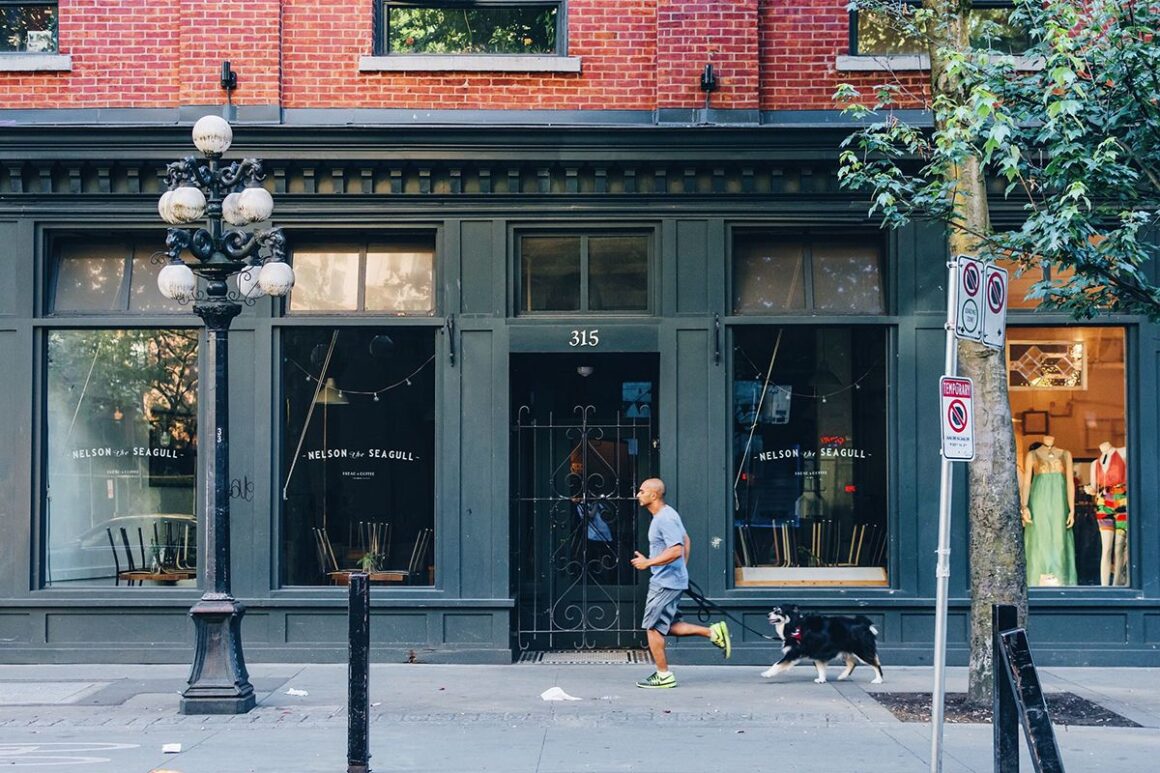
Springtime arrives in Vancouver from March to May when nature comes alive after a long hibernation. The vivid colors of crocuses and daffodils light up the sky when the fresh and warm spring air sweeps through this coastal city.
Vancouver is more lively when everyone hits the streets with their running shoes, cycles around Stanley Park Seawall, and chills out under the pink petals during the Vancouver Cherry Blossoms Festival.
Vancouver’s weather in spring rises to 19˚C (66˚F) during the day and hovers around 5˚C (41˚F) when night falls. Note that it still gets chilly in the mornings and evenings. So what you want to pack is light clothing that allows you to put on multiple layers at once.
A sweater and a raincoat are also necessary for this wet condition. Apart from the raincoat, you also want an umbrella and waterproof jacket to keep it handy in case the rains come unexpectedly and don’t last long. An umbrella is also a great accessory for an Instagram pose!
Last but not least, springtime is also a great time for orca-watching experience off the coast of Vancouver Island. Don’t forget to pack sunglasses and some allergy pills to avoid seasickness!
What to Wear When Visiting Vancouver in Summer?
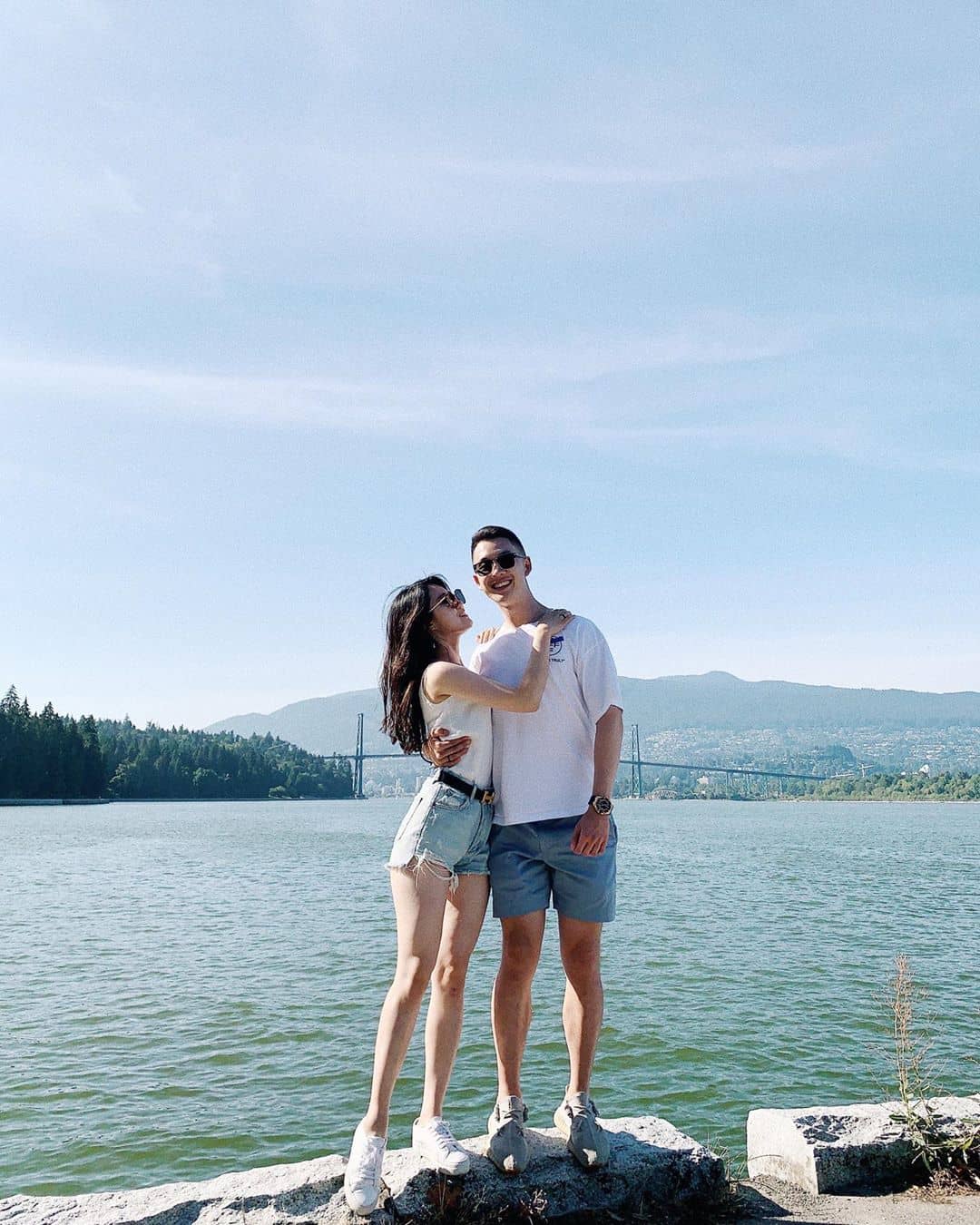
Summer is the peak travel season in Vancouver. Tourists around the world flock here from June to August to embrace the warm, comfortable weather under the sunny, partly cloudy sky.
The temperature rises to 23°C (73˚F) in the daytime and drops to 13°C (55˚F) overnight. Summer is also the driest time in Vancouver but it does get cooler in the evenings around the mountain areas. Therefore, you want a light jacket and thin sweater when going out at night just in case.
Summer comes with a wide array of outdoor activities to enjoy. You can rollerblade by the beach, embark on a hike at Grouse Grind and go shopping at Granville Island Public Market.
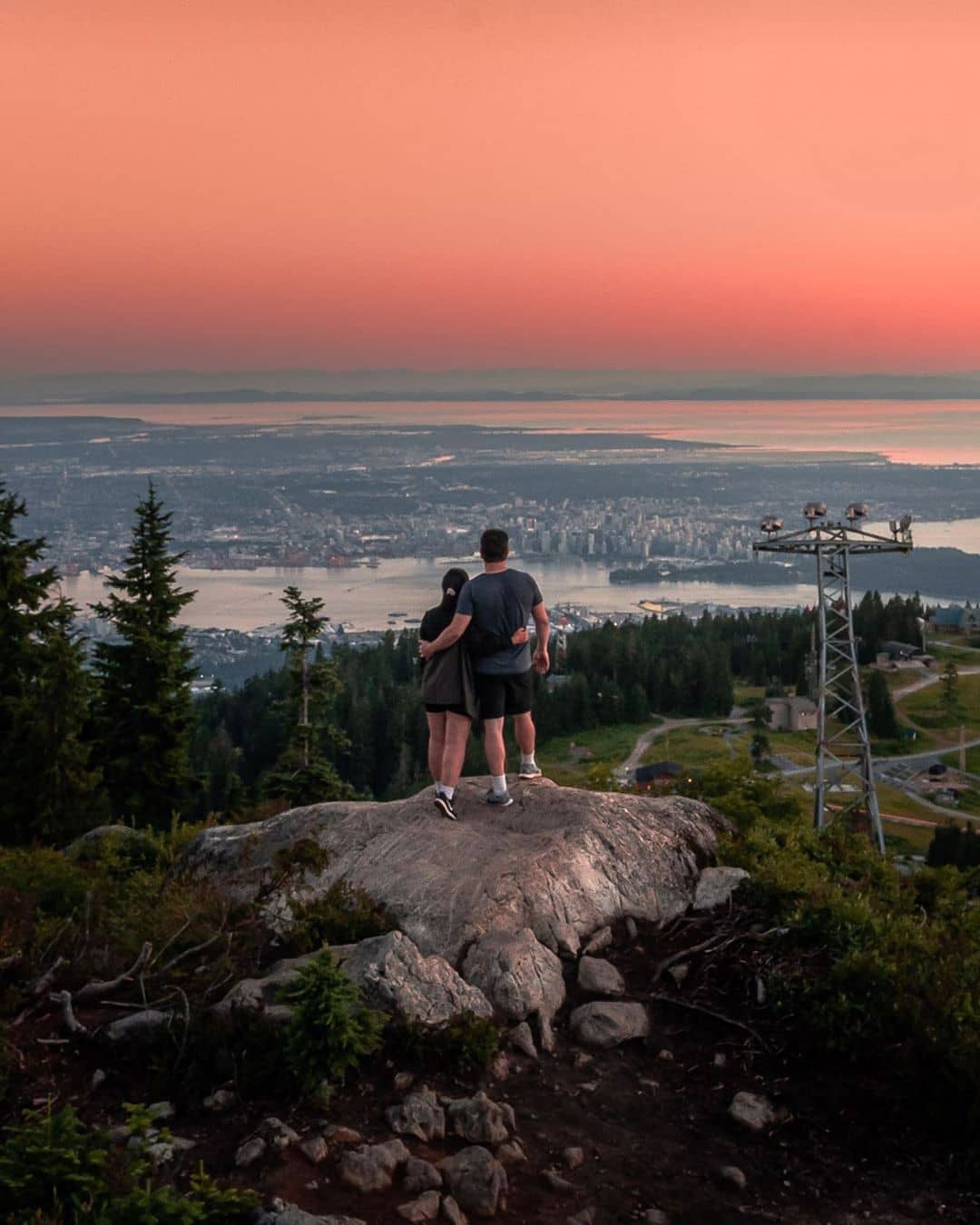
If you’re an energetic soul who loves to rock summertime in your own way, be sure to pack some comfy shorts when walking around or hiking. A pair of waterproof and running shoes surely gear you up against any kind of wet environment.
A swimsuit is your go-to fashion if you want to hit the beach for swimming or playing volleyball on the sand court.
Summer in Vancouver is a great time for a meal out or brewery hopping with your friends. If you’ve got a restaurant on your list for dinner or brunch, pack something comfy enough to walk around like a midi skirt or cropped denim with a peasant blouse. Men can go for classic wardrobe essentials such as slim-straight jeans, T-shirt, put on a denim jacket and you’re sorted!
What to Wear When Visiting Vancouver in Fall?
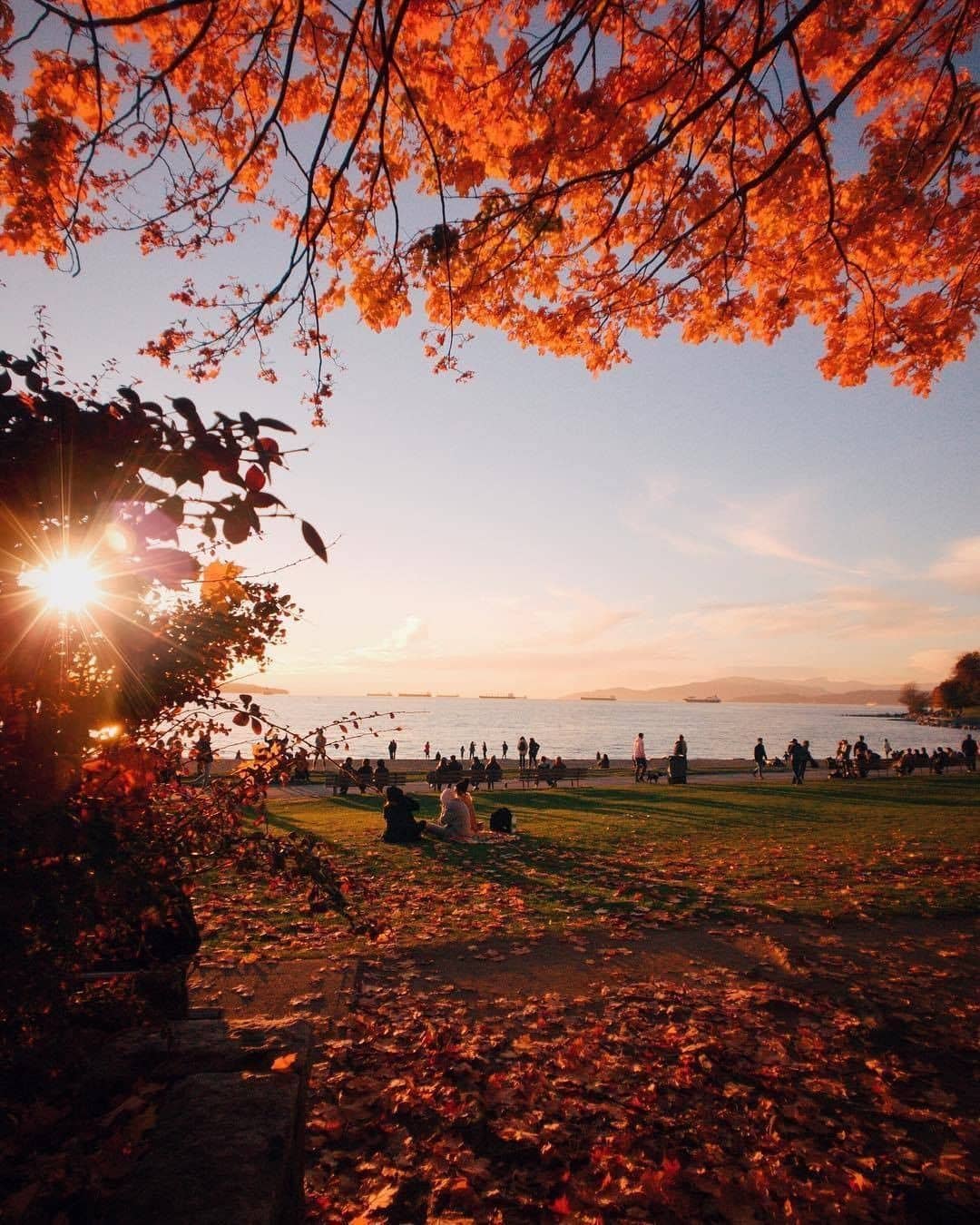
People talk about fall in Vancouver with a bright smile as this season blankets the city with a dreamy and romantic picture of amber foliage.
During fall, Vancouver welcomes the mild weather and rains. If summer is the driest time in Vancouver, then fall is when the rains come more often and may last for half a month at a time. And that is how we came up with a joke calling Vancouver “Raincouver”.
To protect yourself from the unexpected rain, don’t forget to pack a raincoat or umbrella whenever you’re going out. Other than that, a waterproof and windproof jacket is also a great idea that the locals often wear when going outside.
The temperature hovers around 4°C – 12°C (39˚F – 53˚F) from September to November. However, you will still see the beautifully sunny days even though it’s getting crisp in the morning and evening. Something warmer like a hoodie is essential when you’re outside leaf-peeping or blending into the spooky crowd at the Halloween parade.
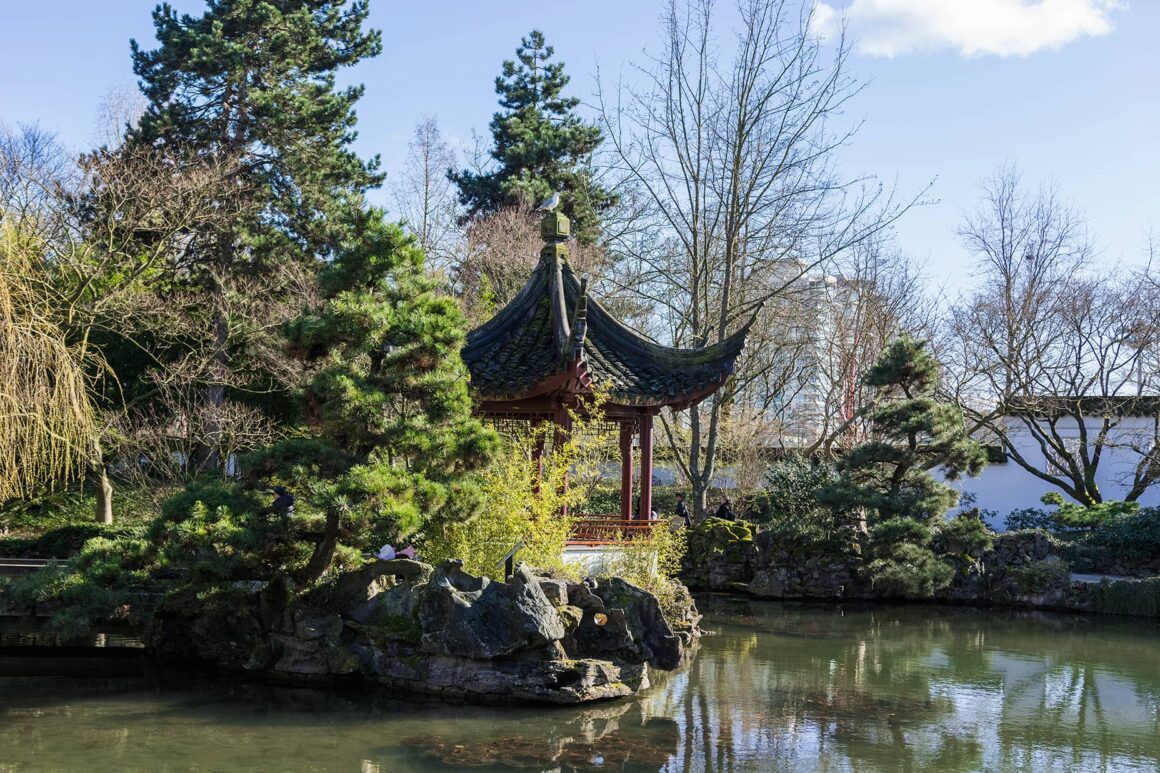
Fall is the season transition, which means you can still enjoy the lingering summer vibe with a kayak trip or wandering around Chinatown’s Dr. Sun Yat Sen Classical Chinese Garden. A warm hat is not only able to keep you cozy but also a classic accessory for any Instagram shot.
As it’s getting colder in fall, chances are you need a lot of clothes for this trip. Our tip is to bring multiple layerable outfits like a long sleeve, a sweater, and a rain jacket. This allows you to put on as many layers as you want throughout the day due to the temperature transition from morning till night.
What to Wear When Visiting Vancouver in Winter?
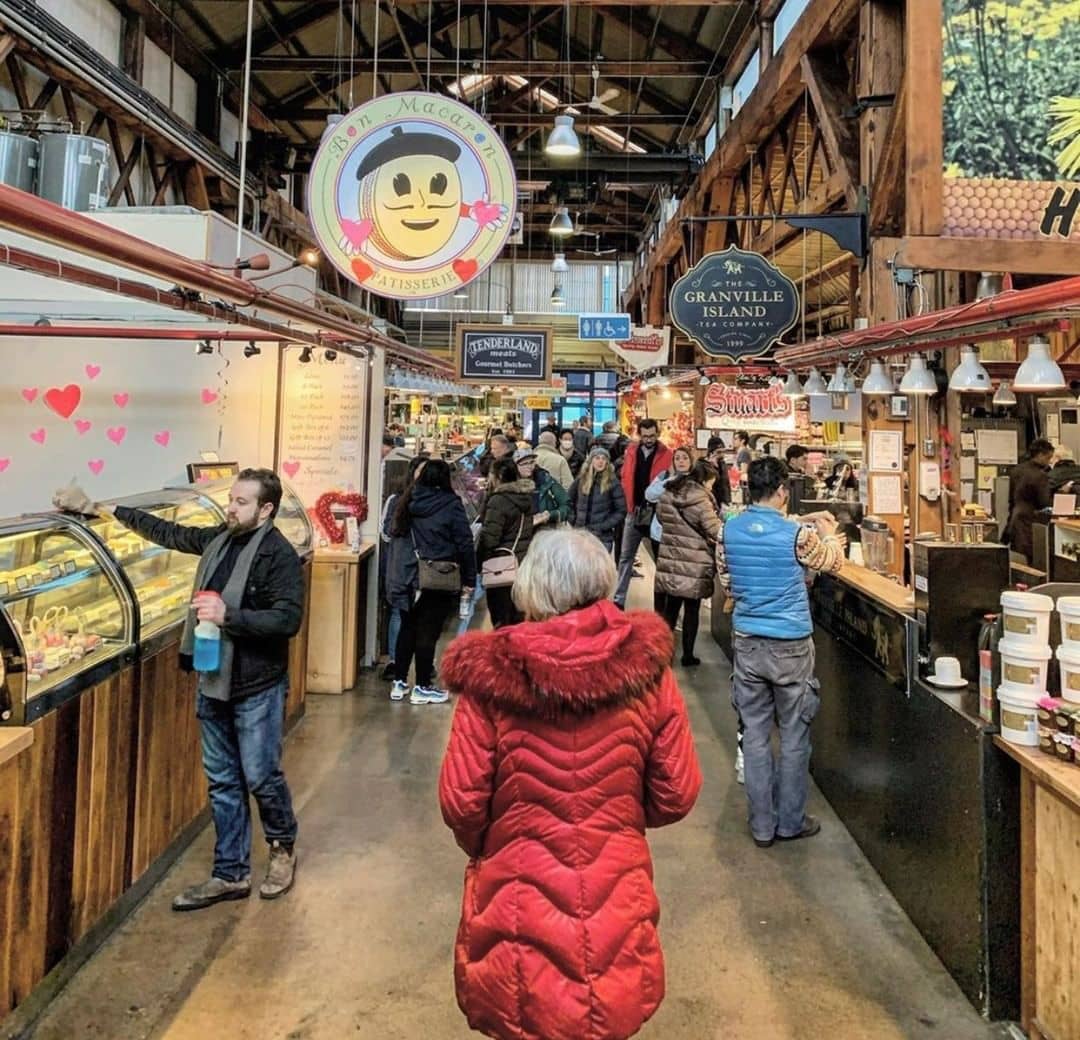
The dwindling sunshine followed by showering rains is the signal of wintertime in Vancouver. It begins in November and lasts till February next year. The temperature reaches 10˚C (50˚F) during the daytime and hovers around 3˚C (37˚F) by night.
Winter is the limelight of year-end outdoor activities. People look forward to this season to shred the snowy slopes at the mountain resorts on the outskirts of downtown Vancouver, and throw a family union party by the dazzling Christmas tree.
In general, Vancouver is getting more wet during winter. It barely snows in downtown except for the ski hills. To dress for the constant windy and wet weather, don’t forget warm clothes such as a winter jacket, raincoat, and umbrella.
If you’re heading to the ski resort, what you want to pack besides a decent ski gear are waterproof, perhaps leather-made boots or sneakers that cover your ankles, a scarf, gloves, and hat.
Now you have a complete packing check-list for the upcoming trip to Vancouver. What else do you need? Probably a local’s travel guide to all the best places to explore in town. Here are our definitive guidebooks to cover our favorite restaurants, cafes, and shopping spots in each Vancouver’s neighborhood.
